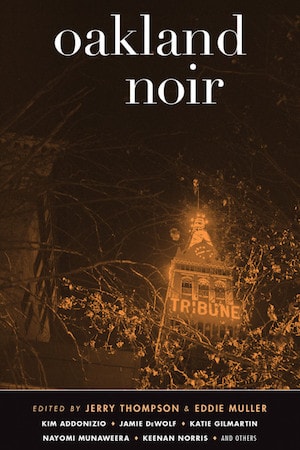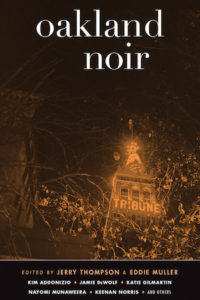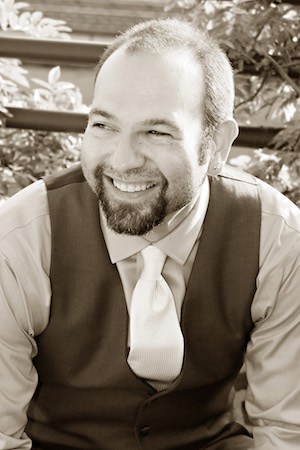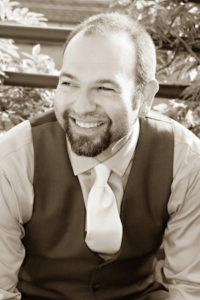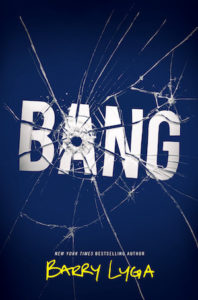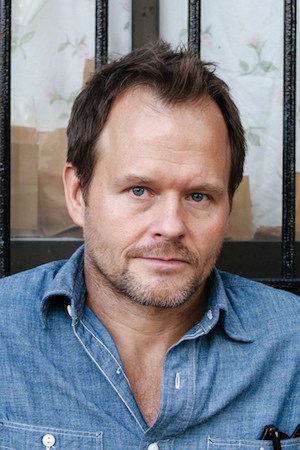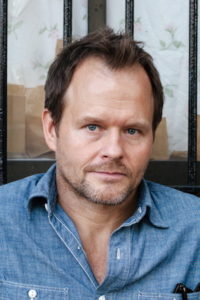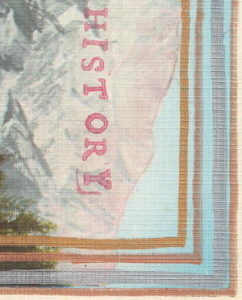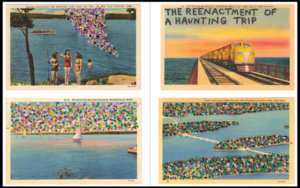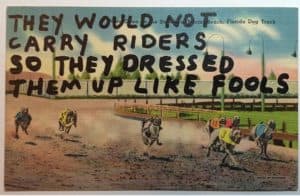If you live in the Bay Area, which we did for many years, and you have a penchant for the dark side that draws you toward the underbelly of noir, you know Eddie Muller. He’s a legend. Let’s face it, you don’t get to be the Czar of Noir for nothing. So when we found out he was editing the new Oakland Noir, part of the great noir series by Akashic, we jumped at the chance to pick his dark brain about Oaktown, writing and the book business.
Read this interview on the HuffPost.
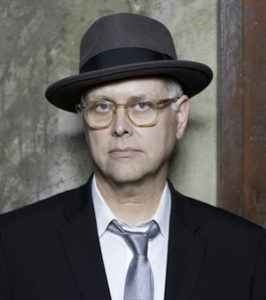
The Book Doctors: What are your earliest memories of being interested in noir? What were some of your favorite noirish books when you were going up, and why?
Eddie Muller: I’m of an earlier generation, pre-VCR. I was first drawn to noir by movies I’d see on Dialing for Dollars, weekdays afternoons when I’d cut school. Stuff like Thieves’ Highway and Cry of the City and The Big Heat. I started combing TV Guide to find movies with “Big,” “City,” “Street” and “Night” in the title. There’s a title: Big City Streets at Night. I’d watch that. The look of the films and the attitudes of the characters resonated with me. I was at the epicenter of the hippie movement in San Francisco, but I was intrigued by this earlier generation’s style and attitude.
In high school I started reading Raymond Chandler and Dashiell Hammett, and the die was cast. In that way, I’m like virtually every other crime fiction writer. It’s amazing the influence those guys had, especially Chandler. His prose was intoxicating. Reading Hammett’s short stories made you want to be a detective. Reading Chandler made you want to be a writer. After that, you just start devouring everything. At a certain point I began distinguishing between mystery writers and crime writers. And I became less interested in the detective whodunnits and more fascinated by the noir stuff: Patricia Highsmith, Jim Thompson, David Goodis, Charles Willeford. Their books don’t resolve neatly. Things aren’t going to end well.
TBD: What are you currently reading?
EM: I’m looking forward to a couple of days off so I can read Paul Auster’s latest, 4321. I’ve seen some discouraging reviews, but I read everything of this. He’s my favorite living author. I enjoy how his mind works and I like how he translates it to the page.
TBD: What are some of your favorite noir classics, and again, why?
EM: Derek Raymond’s Factory series books are pretty great, especially I Was Dora Suarez. He really turned detective stories into noir literature. Forgive me for touting the obvious touchstones: Hammett’s big three: Red Harvest, The Maltese Falcon, and The Glass Key. Chandler’s The Long Goodbye. Here’s the thing about crime fiction: you end up loving a writer’s body of work more than a single book. I like reading David Goodis, but I can’t say I like Cassidy’s Girl more than Nightfall. Same with Jim Thompson. Charles Willeford, The Burnt Orange Heresy. I like Highsmith’s Ripley novels. I like Highsmith in general. She still doesn’t get her due because, obviously, she was a woman writing in what’s perceived as a man’s genre. I had that bias once, as a younger and stupider man. Then I wised up. More guys should wise up.
TBD: Having been published in San Francisco Noir, part of the Akashic series, I’m a big fan of these books. How did you become involved with Oakland Noir?
EM: Well, we were both in that San Francisco noir collection! I was sort of wondering when Johnny Temple, Akashic’s publisher, would get around to Oakland. I mean, seriously, how can you have Duluth Noir before Oakland Noir? As it turns out, Jerry Thompson, who’s a writer and bookseller in Oakland, had pitched Johnny on an Oakland Noir collection but hadn’t gotten a green light. Then Jerry approached me about co-editing the anthology—and I guess because Johnny and I had some history we got the go-ahead.
TBD: What was it like editing all these amazing writers?
EM: It was great! Jerry and I shared a vision of what we wanted the book to be—an accurate demographic reflection of the city. Meaning we wanted an appropriate gender/racial/ethnic mix to the stories. Which can be tricky. You want good well-conceived, well-written stories, not just stories featuring a black or Asian or Hispanic character. Let’s be honest: it’s a crap shoot. Jerry did the hard work of selecting most of the contributors, because he knew the literary landscape of Oakland; I pulled in a couple of my buddies, Kim Addonizio and Joe Loya. We had a vision of how the book should play out, but you can’t tell writers what to write. In the end, I was happy with the result. The reviewer for Publishers Weekly complained that some stories weren’t really noir, but the Kirkus reviewer understood completely: our mission was to reveal the city beneath the mainstream perceptions, to use genre fiction show sides of Oakland not usually seen.
TBD: What do you think separates great noir from everyday pulpy potboilers?
EM: Empathy. Great noir writing makes you feel and contemplate lives gone off the rails. That’s not entertaining for a lot of people, but to me it’s one of the purposes of art.
TBD: What exactly is a noircheologist? (Spell check really hated that word!)
EM: I dig through the past to rescue and revive this stuff. That’s the mission of the Film Noir Foundation, which I founded in 2006. We rescue and restore films, specifically noir, that have slipped through the cracks and disappeared. There are a lot of savvy small publishers who are noircheologists on the literary side, but I’m the guy when it comes to film. We recently resurrected a terrific 1956 noir film from Argentina, Los tallos amargos (The Bitter Stems), and preserved a sensational picture from 1952 called El vampiro negro; it’s an Argentine reworking of Fritz Lang’s M. I’m on a crusade now to show that film noir was not specifically an American thing.
TBD: You have one of the coolest nicknames around: “The Czar of Noir.” How did that come about? And how can I get a nickname that cool?
EM: A woman named Laura Sheppard, event coordinator at the Mechanic’s Institute Library in San Francisco, was introducing me one night. She was reading the far-too-lengthy bio I’d supplied—you do that when you’re young and trying too hard—and, frankly, I think she just got tired of it. So she said, “Hell, he’s just the czar of noir.” It’s been the gift that keeps on giving. If you want a cool nickname, I can put you in touch with Laura.
TBD: Will you ever get tired of noir?
EM: I don’t think so. Not once I realized there was far more to it than what was ascribed by the original scholars on the subject. It annoys some purists when you stretch the boundaries, but who cares? We sold out a week of shows at the Museum of Modern Art in New York presenting virtually unknown film noir from Argentina. Akashic’s Noir series has been a fabulous way of getting new writers published and providing a valuable anthropological–literary experience. There’s been a long overdue rethinking of this terrain as strictly a male-only province. All good, as far as I’m concerned.
TBD: We hate to ask you this, but what advice do you have for writers in general, and writers of noir specifically?
EM: Understand that noir is not about the body count. It is often about violence—the psychological pressures that lead to it, and the inherent drama in trying to stem the tide. It bothers me when books and films featuring ugly people engaged in relentless killing are described as “noir.” It’s not. Those are just Tom and Jerry cartoons for post-adolescent boys. Not entertaining to me, and not of any significant value to the culture at large. I guess my advice would be “Aim a little higher.”
[themify_hr color=”light-gray” ]
Eddie Muller is the world’s foremost authority on film noir. As founder and president of the Film Noir Foundation he is a leading figure in film restoration and preservation, and a familiar face and voice on the international film festival circuit, DVD special features and Turner Classic Movies, where he hosts Noir Alley every Sunday morning at 10am EST.
JOIN OUR NEWSLETTER TO RECEIVE MORE INTERVIEWS AND TIPS ON HOW TO GET PUBLISHED.
